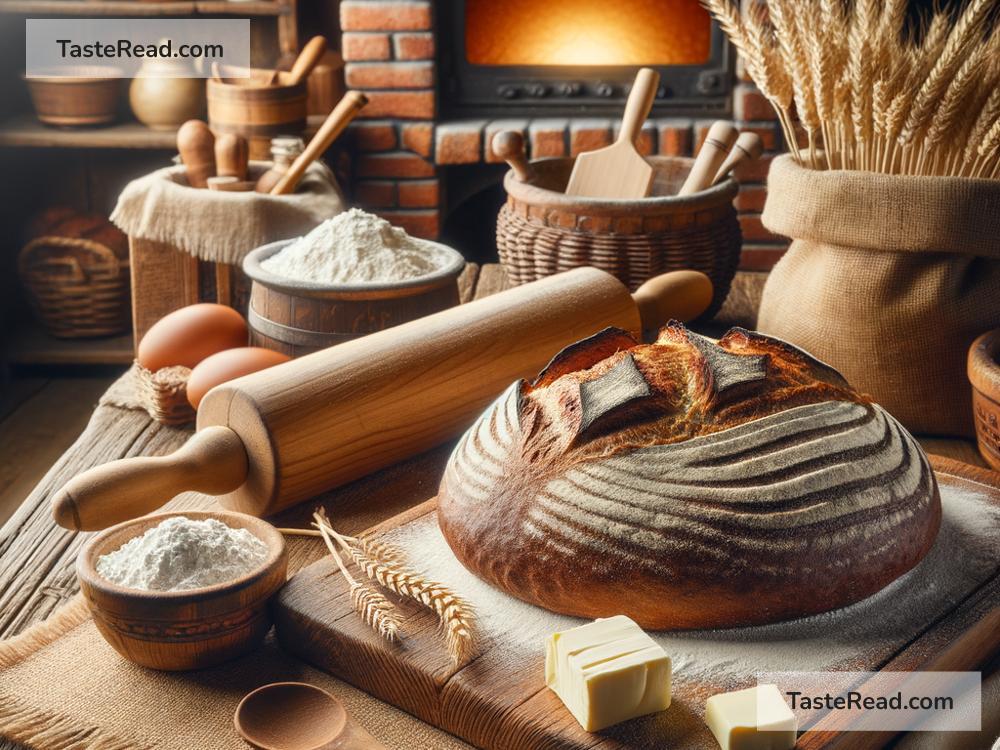The Heritage and Charm of Traditional Finnish Rye Bread
Rye bread is more than just food in Finland—it’s a part of the country’s heart and history. Strong, dark, and tangy rye bread has been a staple of Finnish homes for centuries. This humble bread holds stories of survival, family traditions, and a deep connection to the land. Let’s dive into the history and charm of Finnish rye bread, along with the traditional recipes that have been passed down through generations.
Why Rye?
Finland’s cold climate plays a big role in its food traditions. Rye grows well in the northern environment, where other grains, such as wheat, might struggle. Because of this, rye became the backbone of Finnish farming and cooking. Rye is rich in nutrients, easy to store, and lasts a long time—qualities that were essential during tough winters in the past.
Finnish rye bread, or ruisleipä in Finnish, has a unique flavor. It’s slightly sour, hearty, and full of character. Over time, it became a symbol of Finnish identity and resilience. Even today, rye bread is a favorite food across Finland, enjoyed at breakfast, lunch, and dinner.
A Rich History
Rye bread has been baked in Finland for over 1,000 years. In the old days, Finnish families lived in small wooden houses surrounded by farmlands. Life was simple, and food had to be prepared in large quantities to last through the cold months. Women would bake many large, round loaves of rye bread and hang them from wooden poles to dry and store. These loaves were naturally sour due to fermentation, which preserved the bread and gave it its signature taste.
Another cherished tradition is the baking of reikäleipä, rye bread with a hole in the center. The hole allowed families to hang the bread on racks for long-term storage. It was practical but also symbolic—a reminder of how deeply rye bread is tied to Finnish households.
By the 19th century, Finns began to favor softer rye bread that could be baked and eaten fresh. Still, some regions kept the old ways alive, creating distinct types of rye bread that reflected local culture.
The Process of Baking Rye Bread
Baking rye bread the traditional Finnish way is a labor of love. The process is slow and requires attention to detail, but it rewards the baker with bread that is rich in flavor.
The key ingredient in Finnish rye bread is the sourdough starter, called juuri. The starter is made from rye flour, water, and wild yeast. It ferments naturally over time, giving the bread its acidity and depth. Once the starter is active, it can be kept alive for years—even decades—by feeding it regularly. Many Finnish families have starters that have been passed down for generations, making each loaf connected to the past.
Here’s a simple breakdown of the baking process for Finnish rye bread:
-
Making the Starter: Combine rye flour and water in a jar and let it ferment for several days. Stir the mixture daily to nurture the wild yeast.
-
Mixing the Dough: Add rye flour, water, and salt to the starter. Mix until you get a sticky dough—it should be thick, but not like a typical wheat dough. Rye doesn’t have as much gluten, so the texture is different.
-
Proofing the Dough: Let the dough rest for hours or even overnight. The long fermentation allows the flavors to intensify and the dough to rise.
-
Shaping the Loaves: Traditionally, Finnish rye bread is baked as round discs, though modern versions may include baguettes or long loaves.
-
Baking: Bake the dough at a high temperature until it’s dark and crusty. The smell filling your kitchen is truly unforgettable—rich, earthy, and comforting.
Why Traditional Rye Bread Matters Today
In today’s fast-paced world, many people look for quick and easy foods. But traditional Finnish rye bread reminds us to slow down and appreciate the beauty of handmade creations. It connects people to nature, culture, and family history.
Many Finns still bake rye bread at home, cherishing the long process as a way to honor their ancestors. Local bakeries across Finland continue to produce rye bread using traditional methods, ensuring that this heritage lives on.
Rye bread is also loved for its health benefits. It’s high in fiber, low in fat, and keeps you full for hours. Its sour flavor makes it the perfect companion to butter, cheese, or Finnish smoked salmon.
Try Baking Finnish Rye Bread Yourself
If you want to experience a piece of Finland in your own kitchen, try baking rye bread. Learning to make the starter, kneading the dough, and waiting patiently for the bread to bake is like taking part in a centuries-old practice. It’s a way to create something with your hands, just as Finnish families have done for generations.
Whether you enjoy rye bread fresh or toasted, it’s hard not to fall in love with its rich flavor and comforting presence. Finnish rye bread isn’t just food—it’s a tradition, a story, and a slice of Finnish life.
So, get your apron on, gather some rye flour, and start baking. Every loaf you create is a tribute to the history and heritage of Finland, and a taste of its timeless charm.


